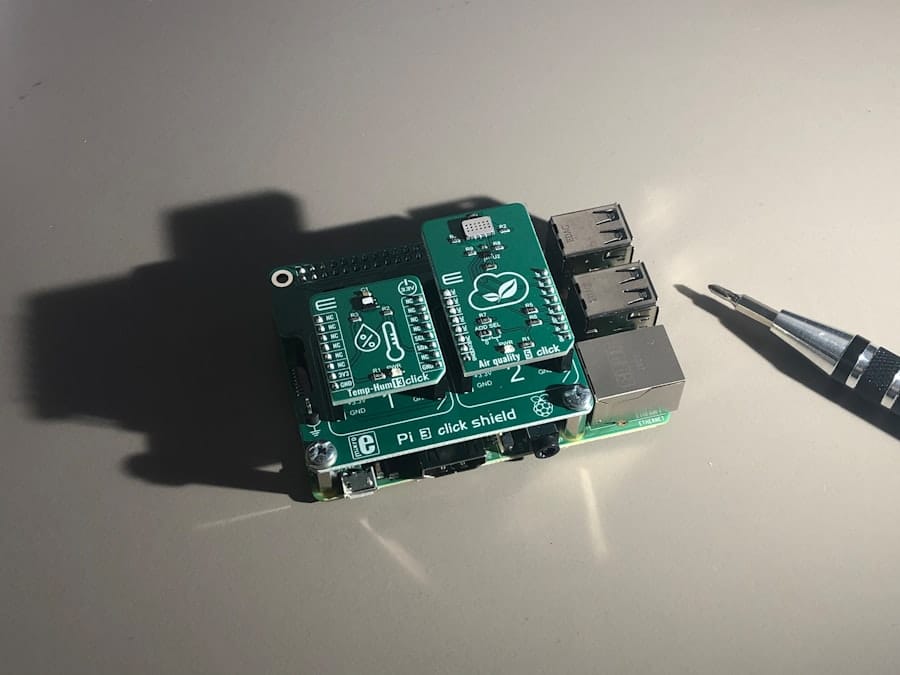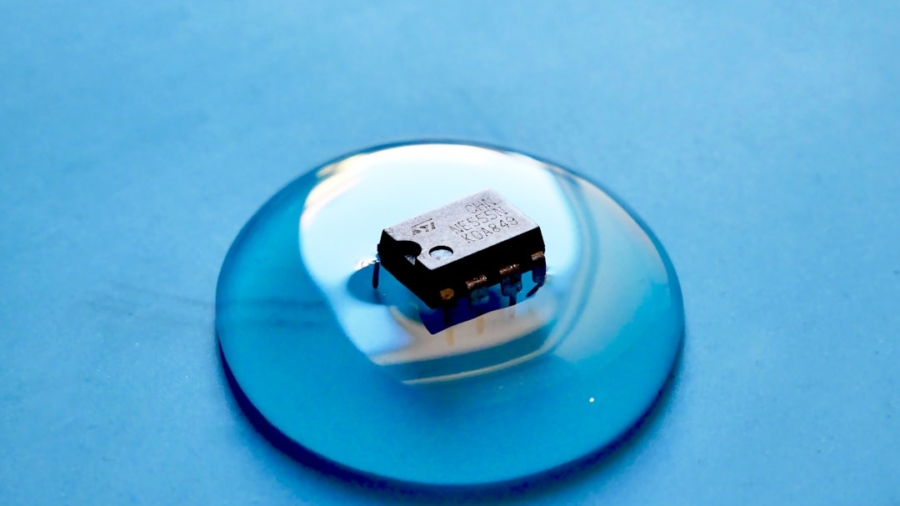Early detection of fires is paramount in safeguarding lives and property. The rapid nature of fire spread can turn a small flame into a devastating inferno within minutes, making timely intervention critical. Statistics reveal that the majority of fire-related fatalities occur in residential settings, often due to delayed response times.
According to the National Fire Protection Association (NFPA), having a working smoke alarm can reduce the risk of dying in a reported fire by 50%. This underscores the necessity for systems that not only detect smoke but also provide immediate alerts to occupants and emergency services.
Fires can cause extensive damage to structures, leading to costly repairs and loss of valuable assets. The quicker a fire is detected, the sooner it can be extinguished, thereby reducing the overall impact. In commercial settings, early detection can prevent significant financial losses and protect business continuity.
For instance, a fire that is detected within the first few minutes can often be contained with minimal damage, whereas delays can lead to catastrophic outcomes, including total loss of the facility.
Key Takeaways
- Early detection of fires is crucial for preventing damage and saving lives
- Smart sensors use advanced technology to detect smoke, heat, and other fire indicators
- Smart sensors offer advantages such as faster response times and reduced false alarms
- Integration with building automation systems allows for seamless control and monitoring
- Remote monitoring and control of smart sensors enhance safety and efficiency for building managers
How Smart Sensors Work
Smart sensors represent a significant advancement in fire detection technology, utilizing sophisticated algorithms and connectivity features to enhance traditional systems. These devices are equipped with multiple sensing technologies, including smoke detection, heat sensing, and even gas detection capabilities. By integrating various types of sensors, smart systems can provide a more comprehensive assessment of potential fire hazards.
For example, a smart sensor may combine optical smoke detection with thermal imaging to differentiate between harmless smoke from cooking and dangerous smoke from an actual fire. The operation of smart sensors is underpinned by advanced data processing capabilities. These sensors continuously monitor environmental conditions and analyze data in real-time.
When a potential fire hazard is detected, the system can differentiate between false alarms and genuine threats through machine learning algorithms that have been trained on vast datasets. This capability significantly reduces the incidence of false alarms, which are a common issue with traditional fire alarms. Additionally, many smart sensors are connected to the Internet of Things (IoT), allowing them to communicate with other devices and systems within a building, enhancing their effectiveness.
Advantages of Smart Sensors over Traditional Fire Alarms

One of the primary advantages of smart sensors over traditional fire alarms is their ability to provide real-time data and analytics. Traditional systems typically rely on simple binary signals—either detecting smoke or not—without any context regarding the environment. In contrast, smart sensors can offer detailed insights into air quality, temperature fluctuations, and even humidity levels.
This information can be invaluable for identifying potential fire risks before they escalate into emergencies. Furthermore, smart sensors are designed to be more user-friendly and accessible. Many modern systems come with mobile applications that allow users to receive alerts directly on their smartphones or tablets.
This feature ensures that individuals are informed about potential dangers even when they are away from the premises. Additionally, smart sensors often include self-diagnostic capabilities that can alert users when maintenance is required or when a sensor is malfunctioning. This proactive approach to maintenance helps ensure that fire detection systems remain operational and effective at all times.
Integration with Building Automation Systems
The integration of smart sensors with building automation systems (BAS) represents a transformative shift in how fire safety is managed within commercial and residential properties. Building automation systems control various aspects of a building’s operations, including lighting, heating, ventilation, and air conditioning (HVAC). By incorporating smart fire sensors into these systems, property managers can create a cohesive safety strategy that enhances overall building management.
For instance, in the event of a fire detection, the BAS can automatically initiate emergency protocols such as unlocking exits, shutting down HVAC systems to prevent smoke spread, and activating emergency lighting. This level of integration not only streamlines emergency responses but also ensures that occupants are guided safely out of the building. Moreover, data collected from smart sensors can be analyzed alongside other building performance metrics to identify trends and improve safety protocols over time.
Remote Monitoring and Control
Remote monitoring capabilities are another significant advantage offered by smart sensor technology. With traditional fire alarm systems, monitoring often requires physical presence or periodic checks by personnel. In contrast, smart sensors enable continuous remote surveillance through cloud-based platforms.
This means that facility managers or homeowners can monitor their properties from anywhere in the world using an internet-connected device. This remote access allows for immediate response to alerts and notifications. For example, if a sensor detects smoke while the building owner is away on vacation, they can receive an instant alert on their smartphone and take appropriate action—whether that means contacting emergency services or alerting someone nearby to investigate further.
Additionally, remote control features allow users to adjust settings or perform diagnostics without needing to be physically present at the location, enhancing convenience and operational efficiency.
Enhancing Safety and Efficiency

The implementation of smart sensors significantly enhances both safety and operational efficiency within buildings. By providing accurate and timely information about potential fire hazards, these devices empower occupants and management teams to take proactive measures rather than reactive ones. For example, if a sensor detects an unusual rise in temperature in a specific area, maintenance personnel can investigate before a fire ignites.
Moreover, smart sensors contribute to energy efficiency in buildings by integrating with other systems such as HVAC and lighting controls. For instance, if a fire is detected in a specific zone, the HVAC system can be programmed to shut down in that area to prevent smoke from spreading throughout the building. This not only protects occupants but also conserves energy by avoiding unnecessary heating or cooling in unaffected areas during an emergency.
Cost-Effectiveness of Smart Sensor Technology
While the initial investment in smart sensor technology may be higher than traditional fire alarm systems, the long-term cost-effectiveness becomes apparent when considering the reduced risk of false alarms and enhanced operational efficiencies. Traditional systems often incur costs related to frequent false alarms that require emergency services response or unnecessary evacuations. Smart sensors mitigate these issues through advanced detection capabilities that minimize false alerts.
Additionally, the integration of smart sensors with building automation systems can lead to significant savings on energy costs over time. By optimizing HVAC operations based on real-time data from fire sensors, buildings can reduce energy consumption during non-emergency periods while ensuring safety during emergencies. Furthermore, insurance companies may offer reduced premiums for properties equipped with advanced fire detection systems, recognizing their potential to lower risk.
Future Developments in Fire Prevention Systems
The future of fire prevention systems is poised for exciting advancements as technology continues to evolve. One area of development is the integration of artificial intelligence (AI) into fire detection systems. AI algorithms could enhance predictive analytics capabilities by analyzing historical data patterns to identify potential fire risks before they occur.
This proactive approach could revolutionize how buildings manage fire safety. Another promising avenue is the incorporation of drone technology for fire surveillance in large facilities or outdoor environments. Drones equipped with thermal imaging cameras could provide real-time aerial views of potential fire hazards, allowing for quicker assessments and responses by emergency services.
Additionally, advancements in materials science may lead to the development of more sensitive smoke detectors that can identify specific types of smoke or gases associated with different materials burning. As urbanization continues to rise and buildings become more complex, the need for innovative fire prevention solutions will only grow. The integration of smart technologies into fire safety protocols will play a crucial role in ensuring that both lives and properties are protected against the ever-present threat of fire.
In the realm of fire prevention systems, the integration of smart sensors is becoming increasingly crucial. These advanced sensors not only detect smoke and heat more accurately but also communicate with other devices to provide real-time alerts and data analysis, enhancing overall safety and response times. For those interested in the technological advancements that complement such systems, an article on the best software for working with piles of numbers might be of interest. This piece explores software solutions that can efficiently handle and analyze large datasets, which is essential for processing the vast amounts of data generated by smart sensors in fire prevention systems.
FAQs
What are smart sensors in fire prevention systems?
Smart sensors in fire prevention systems are advanced devices that can detect various environmental changes and potential fire hazards. These sensors are equipped with technology that allows them to communicate with other devices and systems, providing real-time data and alerts for early detection and prevention of fires.
How do smart sensors improve fire prevention systems?
Smart sensors improve fire prevention systems by providing more accurate and timely detection of potential fire hazards. They can detect changes in temperature, smoke, and air quality, and can communicate this information to other devices and systems for a coordinated response. This early detection and communication can help prevent fires from spreading and minimize damage.
What are the benefits of using smart sensors in fire prevention systems?
Some benefits of using smart sensors in fire prevention systems include:
– Early detection of potential fire hazards
– Real-time data and alerts for quick response
– Integration with other devices and systems for a coordinated approach to fire prevention
– Minimization of false alarms and improved accuracy in detecting actual fires
– Enhanced safety for occupants and property
What types of smart sensors are commonly used in fire prevention systems?
Common types of smart sensors used in fire prevention systems include:
– Smoke detectors
– Heat detectors
– Gas detectors
– Carbon monoxide detectors
– Air quality sensors
– Thermal imaging cameras
How do smart sensors contribute to building safety and compliance with regulations?
Smart sensors contribute to building safety and compliance with regulations by providing more reliable and accurate detection of potential fire hazards. By integrating smart sensors into fire prevention systems, building owners and managers can demonstrate a proactive approach to fire safety and compliance with regulations, leading to a safer environment for occupants and reduced risk of liability.

